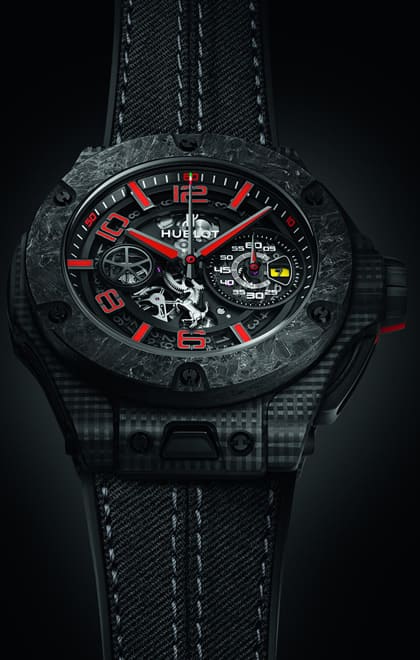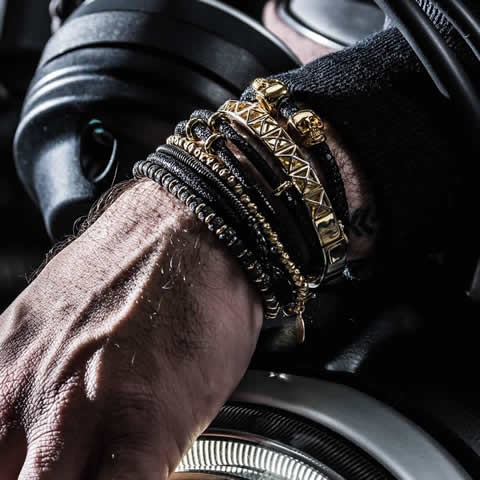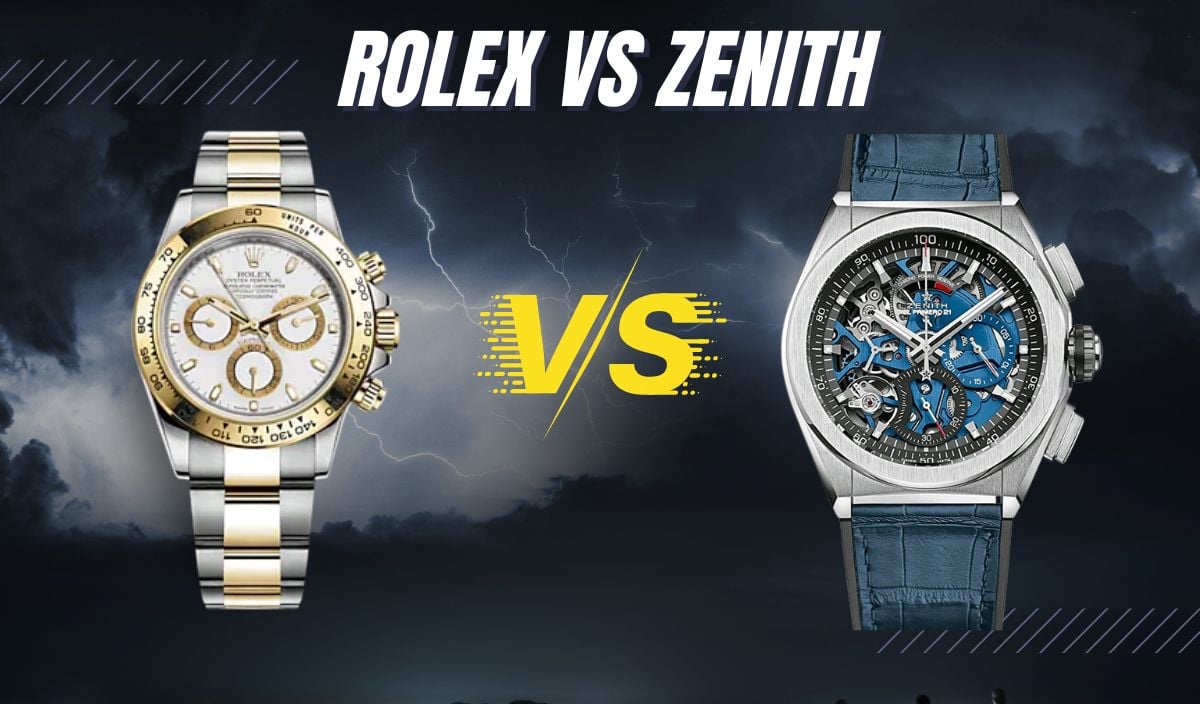
Rolex vs. Zenith Watches (EVERYTHING You Should Know)
The question we will tackle today is whether I should choose either a Zenith or Rolex timepiece for my next purchase. Purely from the standpoint of brand recognition, the hands-down selection would be a Rolex. Rolex is perhaps the most recognizable luxury watch in all the world, but to truly make an informed and subjective decision, we will discuss the similarities and differences between both brands.
Zenith’s History
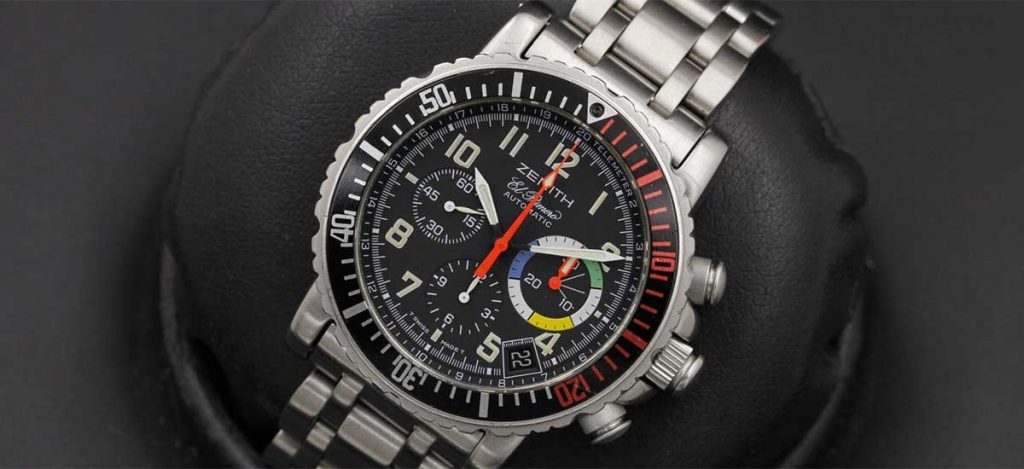
We will begin by providing some background on the Zenith brand. The company was started in 1865 by Georges Favre-Jacot in Neuchatel, and is one of the longest operating and manufacturing watch houses in all of Switzerland. Favre-Jacot is the originator of the concept of “in-house movements” where every aspect of the watch manufacturing process was controlled in-house.
He believed that only true perfection could be achieved by controlling every facet of a watch’s conception to its finished product. He built a vertically integrated operation and in 1900 he won the Grand Prix award at the Paris World’s Fair for his Zenith movement. By 1911, the company would bear the name Zenith as its official brand.
Throughout the early 1900s, Zenith continued garnering awards for excellence in chronometry. The caliber 26x and the caliber 135 movements were introduced and contributed to the eventual accumulation of over 2300 awards for chronometry and precision timekeeping. The watches may not be COSC certified, but Zenith is renowned for its rigorous accuracy standards.
Zenith purchased movement maker Martel in 1959. This opened the door to the development of the El Primero chronograph movement, which is perhaps one of the greatest contributions to the watchmaking world. This movement was introduced on Jan.10, 1969, and was the very first automatic chronograph timepiece and possessed a frequency of 36,000 VpH. Because of this high rate, the movement offers great positional accuracy and resolution.
Another major development was the use of CAD to develop an ultra-thin movement that ranged from 2.83mm to 6.2mm. (depending upon the array of complications incorporated). Characteristics of the movements included an annual Glucydor balance wheel, a self-compensating balance spring, and an automatic winding mechanism with a large diameter tungsten carbide rotor mounted on ball bearings.
These movements operate at 28,800 VpH and require minimal maintenance. These very precise movements were awarded “Best movement of the Year” at the Basil Fair in 1994. Another triumph in development, design, and assembly for Zenith.
Rolex’s History
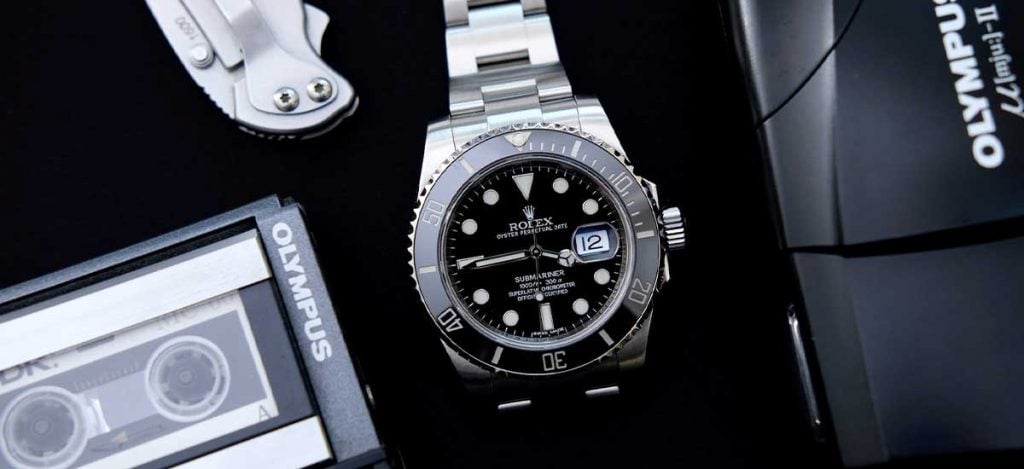
Rolex, surprisingly, has been around for a far shorter time than Zenith and compared to most other luxury Swiss brands. This is an even greater testimony to the success of the Rolex brand and the reputation the company enjoys today. Much of this success is attributable to Hans Wilsdorf, the English entrepreneur responsible for the creation of the brand.
Though conceived in England, Wildorf created the Rolex brand in 1908 and would ultimately move the entire operation to Geneva, Switzerland where he would create the first water-proof self-winding wristwatch with a perpetual rotor. In fact, a patent was issued to Rolex in 1926 for the world’s first waterproof watch, what today is the oyster case.
Rolex has filed for over 500 patents over the history of its existence for innovations that range from their movements to their exclusive Cerachrom bezels and bezel inserts. Cerachrom is a ceramic material that is virtually impervious to scratches and its color is unaffected by the sun’s ultraviolet rays.
Rolex today is a completely vertically integrated company with every step of the watch’s conception to completion performed by the Rolex team. To assure the continued success and commitment to producing the highest quality timepieces, Rolex has an exclusive training center that educates, trains, and acclimates every employee to their culture of excellence as well as one of the most rigorous testing labs to ensure the integrity of every watch.
There is even a department of tribology where the scientific study of friction, wear, lubrication, and how moving parts interact in every aspect of a watch’s movement and physical parts exists in order to continue Rolex’s constant perfection in watchmaking. Another attribute of the Rolex collection is its commitment to precision and accuracy.
In this aspect, Rolex and Zenith share a common trait, though every Rolex is not only a certified chronometer but a superlative chronometer as reflected by the certificate and green seal that accompanies each wristwatch. The parameters of accuracy exceed those required by the COSC. which are -4/+6 seconds per day. The superlative identification reflects a deviation of -2/+2 seconds daily.
Rolex Cosmograph Daytona vs. Zenith Chronomaster Sport
We will now compare two of the most popular watches available in each brand’s collections. The present-day Rolex Cosmograph Daytona is outfitted with a caliber 4130 self-winding chronograph movement housed in a 40mm. case constructed from 904L stainless steel. This type of steel is made up of various alloys that are particularly resistant to corrosion.
The original Daytona was unveiled in 1963. From 1963-1988, the Daytona had a mechanical chronograph movement made by ETA Valjoux. From 1988- 2000, Rolex procured the Zenith El Primero automatic chronograph movement for use in the Daytona. These models were referred to as the “Rolex Zenith” or the “Zenith Daytona.”
According to the Rolex website, there were modifications made to the El Primero movement by their watchmakers, but for the most part, a majority of the movement’s parts and construction were provided by Zenith. The current in-house produced movement employs a vertical as opposed to a lateral clutch to activate the chronograph.
It has a larger mainspring, increasing the power reserve feature to 72 hours and the movement features a Parachron hairspring which offers greater resistance to shocks and temperature variations. An easy way to determine if the Daytona you are handling has an El Primero movement is if the running seconds’ indication subdial is at the nine position.
Also, if there is a 60 on the subdial, the watch has a Zenith movement. Since 2000, Rolex has made many modifications and improved its caliber 4130 movements to increase its accuracy and precision. The pre-2000 Daytonas are highly collectible due to the Zenith El Primero relationship. The Daytona collection base model in stainless steel retails for approximately $14,000.00 and prices increase rapidly from there.
The Zenith Chronomaster Sport, though not as popular as the Rolex Daytona, is a beautiful watch in its own right. The entrance price point for a Chronomaster Sport is approximately $11,000.00 retail in stainless steel with an 18kt. rose gold model running almost $40,000.00. The diameter of the watch is 41mm. and has a self-winding chronograph movement composed of 311 components and resonates at 36,000 VpH. It has a black ceramic bezel and a striking three-color dial and a power reserve of 60 hours.
The Chronomaster Open, introduced in 2003 is worth mentioning here for it has a partially open dial that exposes the regulating organ and the escapement of the watch. This unique feature lends further to the allure and appearance of the timepiece.
Next, we will compare some of the major characteristics and attributes of the Zenith and Rolex collections. The selection of models varies greatly between each brand. Zenith offers about 10 percent of the models and variations in comparison to Rolex. Zenith has 4 distinct collections and is grouped as follows; Defy, Elite, Pilot, and the Chronomaster.
The Defy collections are men’s and women’s watches that combine cutting-edge manufacturing with futuristic forms and materials. The Elite timepieces are ultra-thin dress watches and automatic movements. Most are available with a strap and reflect a purist and classic watch fashion. Lastly, the Pilot segment is probably the most renowned after the Chronomaster.
Zenith created the very first pilot and aviation watch and trademarked the term “Pilot” in 1904. To this day, the Zenith Pilot watch is the only watch that has the word “Pilot” on the dial. Rolex, on the other hand, has over 1400 different models with some of the most popular styles being the Presidential, Submariner, Daytona, GMT Master, Sea Dweller, and others.
Another major difference between the two is the timepieces available for women. Here, there is no comparison. Zenith offers a few ladies’ models whereas Rolex has several styles to choose from made in steel, steel, and gold, all 18kt. yellow. rose, or white gold. In addition, women can opt for diamond markers, bezels, and diamond-encrusted bracelets.
Many Rolex models have the distinctive cyclops magnifying lens over the date window at the three o’clock position on the dial. The luster and sparkle of the fluted bezels make a Rolex standout in the sea of swiss luxury watches and the durability and superior water resistancy of the oyster case lend to the watch’s practicality and appeal.
Rolex is probably the most recognized Swiss luxury watch available today. The success of the brand is a virtual case study in creating a luxury item that grows in demand and popularity year after year. In using effective marketing, exclusive distribution, and promotion through partnering and sponsorship of golf, equestrian events, and a host of other prominent sports and activities Rolex has become one of the distinct reflections of success.
The Presidential model is prominent in many board rooms around the world and wearing a Rolex says as much about an individual as the automobile they drive or what zip code they live in. Concerning retail prices, purchasing either a base model Rolex Oyster Perpetual or the least expensive Zenith Elite will cost you about $6000.00.
Resale and Warranties
If resale value is something you are concerned with before purchasing your watch, Rolex would be the better purchase hands down. Even if this is not a consideration at the time of purchase, Rolex watches hold their value better than any other brand on the market. Certain models such as the Daytona are so sought after that older models sell for well over their purchase price in the after-market. Unfortunately, Zenith timepieces, like almost every other brand, do not hold their value as well.
On the subject of warranty, Rolex offers a five-year warranty which is generous compared to most Swiss luxury brands. Zenith watches come with a more standard two-year warranty which is commonplace amongst Swiss watch houses.
In discussing the precision and accuracy of each brand, both Rolex and Zenith produce highly accurate movements. As aforementioned in this article, Rolex watches are not only certified chronometers satisfying the standards set forth by the COSC but bear the “Superlative Chronometer” label because they exceed these standards.
The Zenith movements are very accurate, but they are not certified chronometers. Arguably though, the El Primero is still regarded as the most accurate automatic chronograph movement for measuring time. It too is not a certified chronometer. The only characteristic where Zenith might be considered superior to Rolex is in terms of high horology watches.
High Horology encompasses the realm of watches that incorporate added complications to their movements. Examples of high complications are minute repeaters, perpetual calendars, and tourbillons. Few watch companies are able to create these complications which add considerable prestige to their brand. Zenith created the very first high-beat tourbillon which oscillates at 36,000 VpH or 5 Hz.
While Rolex has some complicated movements such as the caliber 9001 powering the “Sky Dweller” model, the collection is more known for its construction and accuracy. It would be fair to mention that the caliber 9100 movement holds 14 patents making the “Sky Dweller” a pretty impressive model in its own right.
Zenith Vs. IWC timepieces
The question has been posed: are Zenith watches comparable to IWC timepieces? I do not believe there is a simple answer. In making an educated comparison, we will start by discussing the history of IWC. IWC or the International Watch Company, as it is more formally known, was founded in 1868 by the American watchmaker and businessman Florentine Ariosto Jones.
While in Boston, Massachusetts, Jones conceived the idea of combining advanced American production technologies with the skilled craftsmanship of Swiss watchmakers. With this mandate, Jones traveled to Switzerland to start his venture. Upon arriving in Switzerland, he did not receive the warmest reception in places like Geneve or other Swiss centers of watchmaking.
Perhaps this was due to Jones being a foreigner or that the watchmakers in these regions were wary of an outsider and his vision. Instead of becoming discouraged, he went as far north as he could and set up shop in Schafhausen near the German border and on the Rhine river. Being on the Rhine river became a prescient decision because it enabled IWC to harness the river’s flow to provide hydroelectric power for its factory.
This has led to IWC being a major proponent of using renewable energy, making sustainability a prime focus, and a commitment to accelerating biodiversity efforts within the watch industry. As per the corporate website, the purpose of IWC is “Engineering Beyond Time”. Transparency, circularity, and responsibility are the guiding principles and inspire all that the company pursues.
Six collections comprise the IWC brand. The “Pilot’s Watch” has a starting retail price of $4250,00. The “Portofino” starts at $5050.00. The “Davinci” with an opening price tag of $5550.00. The “Ingenieur” with an entrance price point of $4750.00. The “Aquatimer” begins at $5950.00. And lastly the “Portugieser” collection.
The “Portugieser” timepieces are some of the most complicated wristwatches produced in Switzerland. The watches exhibit superior craftsmanship and are like works of art. $7500.00 will get you a base model with prices ranging into the hundreds of thousands of dollars for the most sophisticated and complicated models. In conclusion, IWC offers a wider array of complicated watches than Zenith.
Zenith Vs. Omega
Another question often asked, is how do Zenith watches compare to Omega watches? Omega is a Swiss luxury timepiece that is counted amongst the ten most recognizable brands around the world. Omega was founded in 1848 by Louis Brandt in La Chaux de Fonds, Switzerland. The watch company did not incorporate the “Omega” name until 1903 and even then it was known as a combination of Brandt and Omega.
The major feature that distinguishes Omega watches from other brands is that each is a master chronometer. To achieve this classification, the movements are not just certified chronometers by the COSC (Swiss chronometer testing institute) for accuracy, but they are then put through more precision testing by METAS.
METAS is the Swiss Federal Institute of Metrology. The movements are put through eight additional tests and must fall within certain parameters of accuracy. Whereas the COSC accepts results of -4/+6 seconds per day after the METAS tests the range is 0/+5, 0/+6, and 0/+7 seconds per day depending upon the caliber size of the movement.
The Omega watch line offers over 500 models and has a starting retail price of approximately $5000.00. A basic “Rail Master” is about $4900.00. and a basic divers watch will run you about $5100.00. Women’s watches start at approximately $6000.00. There is great depth to the women’s selections with styles ranging from the classic to models adorned with diamonds and gemstones in solid gold.
There are four distinct subgroups within the collection. Seamaster, Speedmaster, Constellation, and Deville. These groups are also made up of subgroups of assorted styles with choices that most would find appealing.
Omega has many notable inventions and patents it has acquired during its history. The company created the first Master Chronometer Tourbillon and presently offers four models that range from $137,000.00 to over $700,000.00 retail. These handcrafted watches come with either manual winding or self-winding movements and range in case size from 38.7 mm. to 44 mm.
These models are inspired by the first tourbillon wristwatch caliber Omega, created in 1947. Unlike the conventional tourbillon movements where the cages rotated once every minute, the Omega rotated once every 7.5 minutes. This provided greater accuracy leading to the movement being recognized as the most accurate recorded timepiece in 1949.
Another iconic chapter in Omega’s history was the development of the “Moon” watch. This watch was launched in 1957. In 1962, it was the first watch in space when it was worn by Wally Schirra for the Mercury Mission on Oct. 3, 1962.
Nasa subsequently qualified the watch for manned missions in 1965, and astronaut Buzz Aldrin wore it when he walked on the moon on July 21, 1969. Thus Omega became known as “The First Watch on the Moon.” Omega offers a five-year warranty on all of its timepieces making it comparable to Rolex in this respect.
Conclusion
Given the above analysis, I leave you to render your own decision as to the various brand comparisons. Rolex is by far the highest recognized brand of the four brands mentioned in this article. Zenith watches are accurate but have a limited appeal because of the narrow selection of styles. There is a great emphasis on chronographs, and rightfully so given the reputation and success of the EL Primero movement, but this ultimately limits the pool of watch buyers. Both Omega and IWC are far more recognizable Swiss luxury brands and have their own distinct styles and complications that would appeal to both a sophisticated buyer and a watch collector.
All four brands are high-quality timepieces. If you are seeking recognition in your timepiece, then the Rolex should be your choice. After Rolex, Omega probably has the most to offer as far as diverse styles appealing to anyone wanting a luxury watch. The ladies’ pieces in gold with diamonds and gemstones are incredible pieces of jewelry and worthy to be worn to any gala or other social function.
For a watch with different complications, IWC would be my choice but Omega should be considered especially for a tourbillon movement. Lastly, any watch enthusiast with deep pockets would do well to desire to have a Zenith with an El Primero movement in their collection.
About Exquisite Timepieces
Established in 1998, Exquisite Timepieces is your one-stop shop for all things luxury watches! We are an authorized dealer for 60+ luxury watch brands including Omega, Hublot, Seiko, & Longines! We are proud to showcase one of the world’s largest pre-owned watch collections, including renowned brands like Rolex and Patek Philippe. Check out our brand new watch arrivals here and popular pre-owned listings here.


